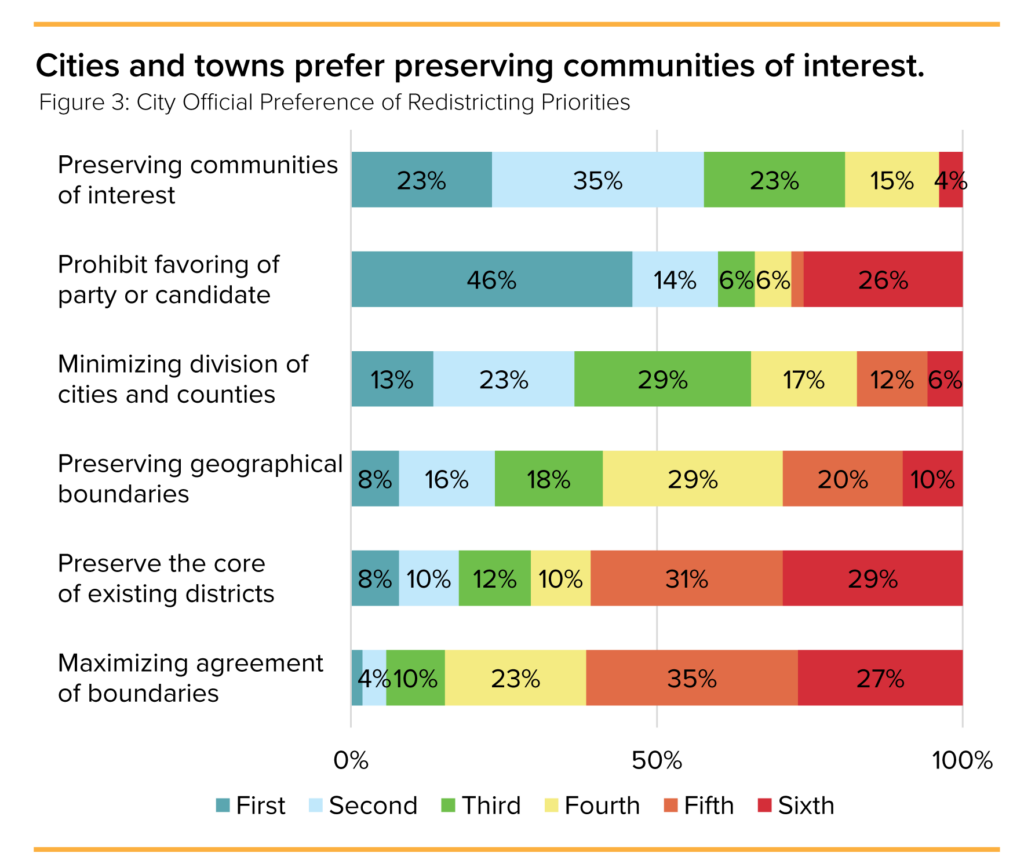City and Town Officials’ Priorities
When redistricting, the Utah Legislature outlined several guiding principles. These include:
- Preserving communities of interest
- Preserving geographical or man-made boundaries
- Preserving the core of prior districts
- Minimizing the division of municipalities and counties
- Maximizing boundary agreement at different political levels
- Prohibiting the purposeful favoring or disfavoring of a party, incumbent, or candidate
In 2020, the Utah Foundation conducted a survey of city officials to gain insight into their perspectives on the redistricting process. Officials were asked to prioritize the six principles, from most important to least important.
Preserving communities of interest and avoiding partisan gerrymanders were most important for city officials. Keeping geographical and man-made boundaries, such as cities and counties, was of secondary importance. Keeping the existing core of districts and maximizing boundary agreement were the least important items.

Keep an eye out for three more posts looking at “Local Government Perspectives.”
About the Survey
The Utah Foundation sought to gain a deeper understanding of how local elected officials viewed the redistricting process. We sent out a survey to elected municipal officials (mayors and city council members). This survey was conducted by University of Utah students in collaboration with the Utah Foundation. There are about 250 cities, and more than 700 mayors and city council members. We received 96 respondents. The survey ran from October 23, 2020, to November 12, 2020.
What is Redistricting?
Redistricting is a process in which the government or a commission subdivides an area into different districts that will vote for their representative. Often, this focus is on state-drawn districts for members of the U.S. House of Representatives, but it also applies to state legislatures and state school board districts. There are several general principles to consider in redistricting. One of the most important things is that each district has the same number of people. Contiguity (where all the parts of a district are connected) and compactness (tighter districts are generally considered better than sprawling ones) are also important considerations. There are several additional priorities, including preserving communities of interest, maintaining geographical or man-made boundaries, keeping the core of prior districts, minimizing the division of municipalities and counties, ensuring that boundaries align at different political levels, and prohibiting the purposeful favoring or disfavoring of a party, incumbent, or candidate.
Categories:

